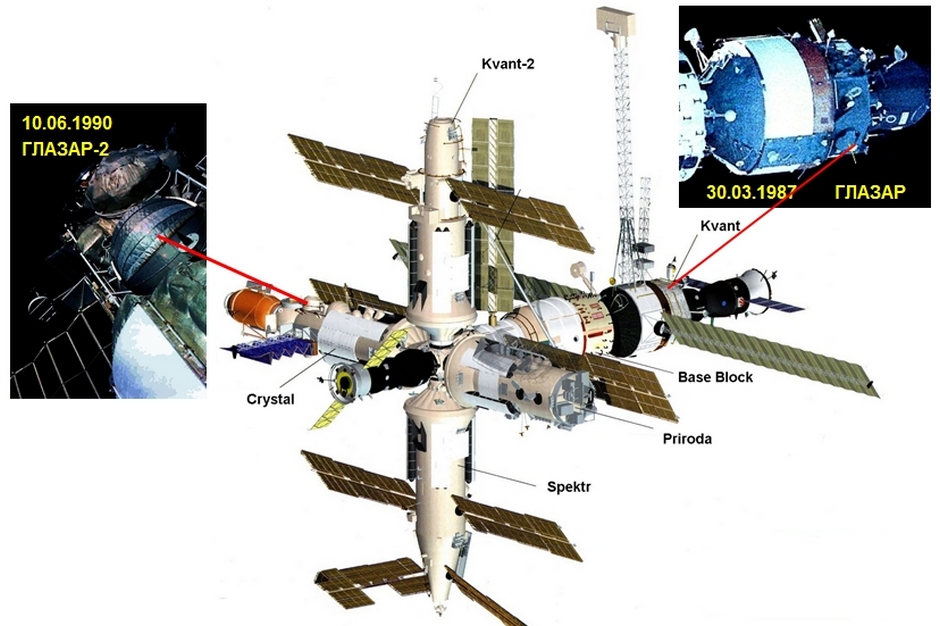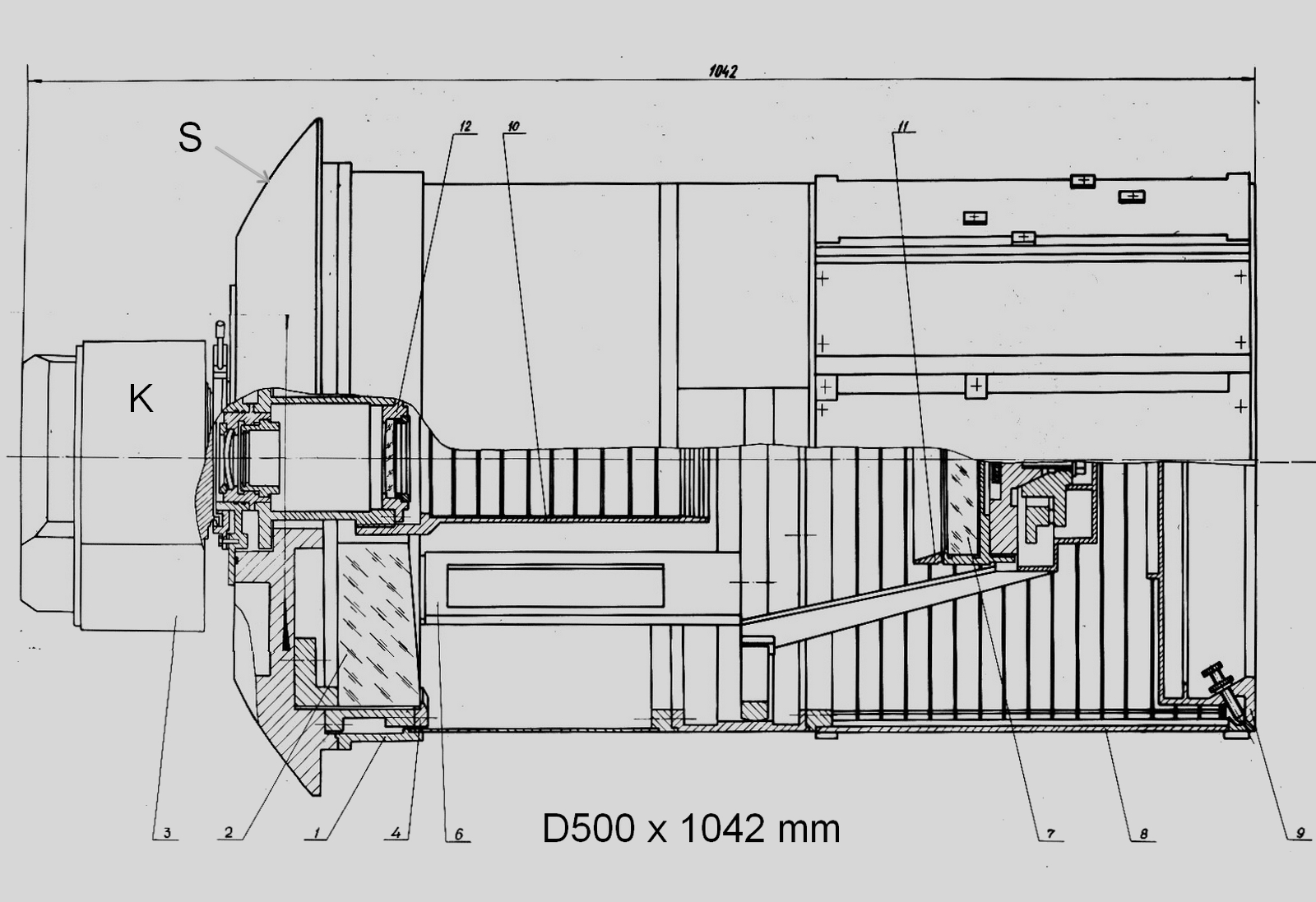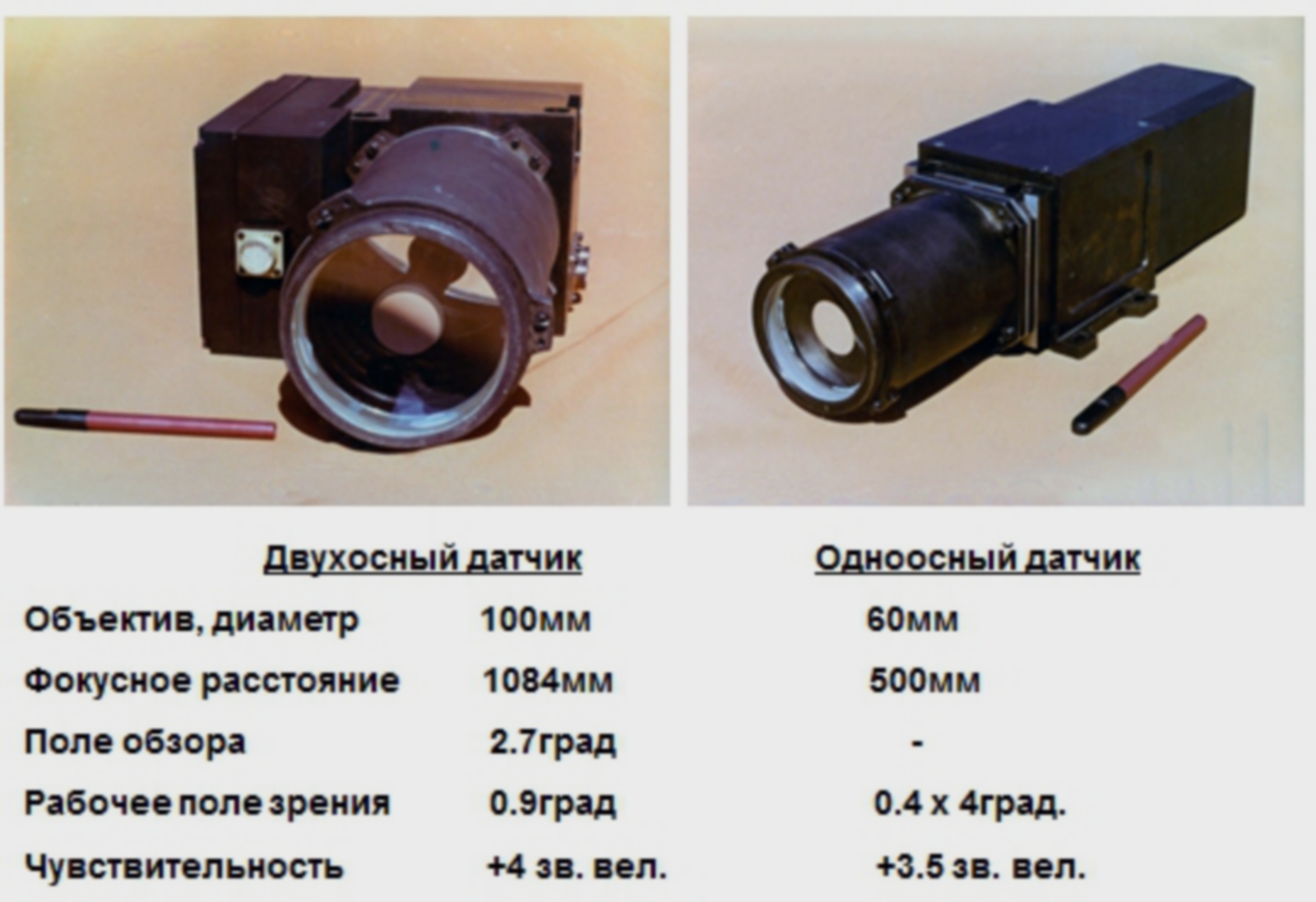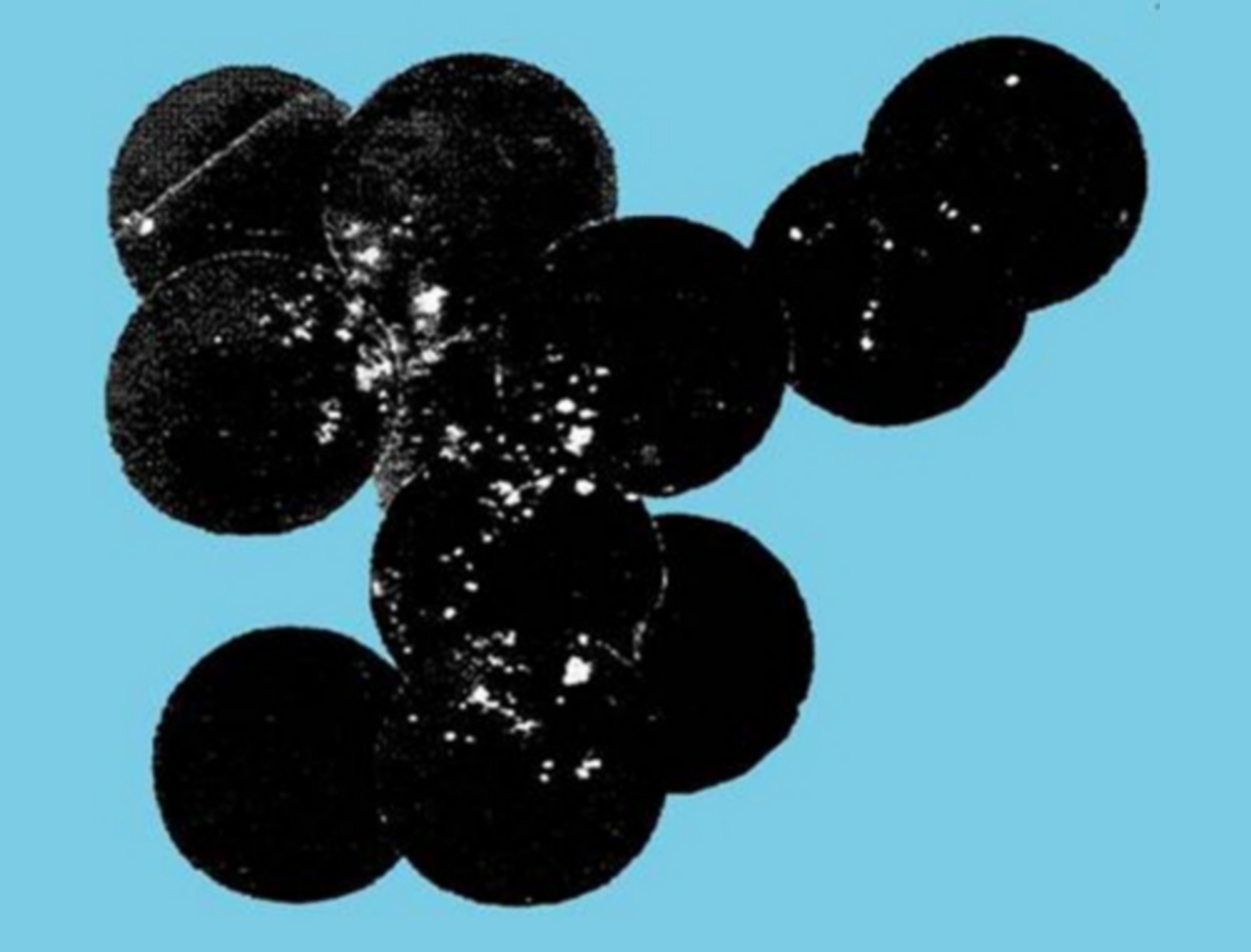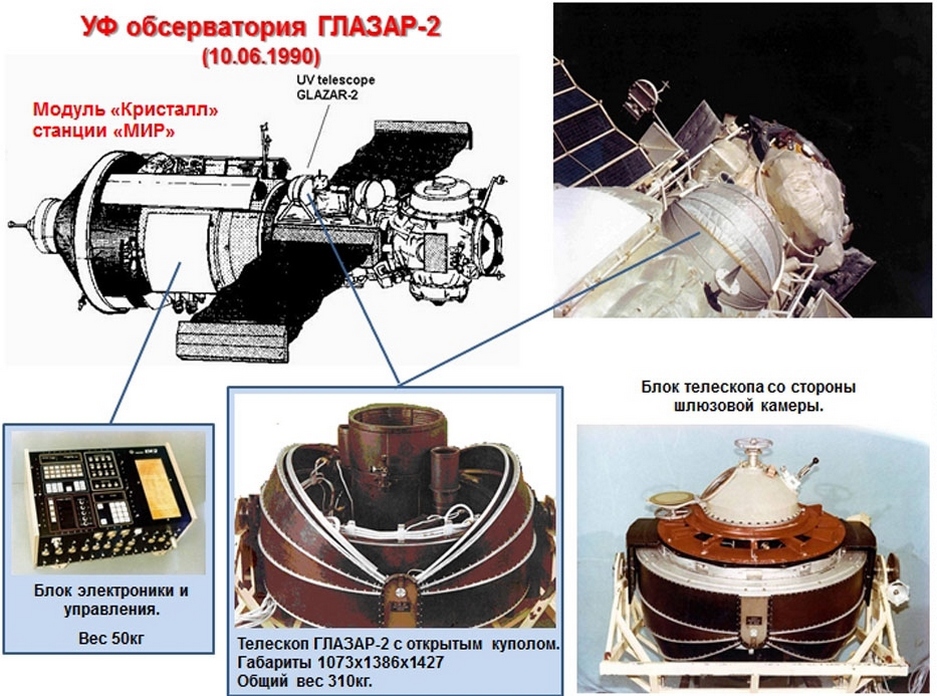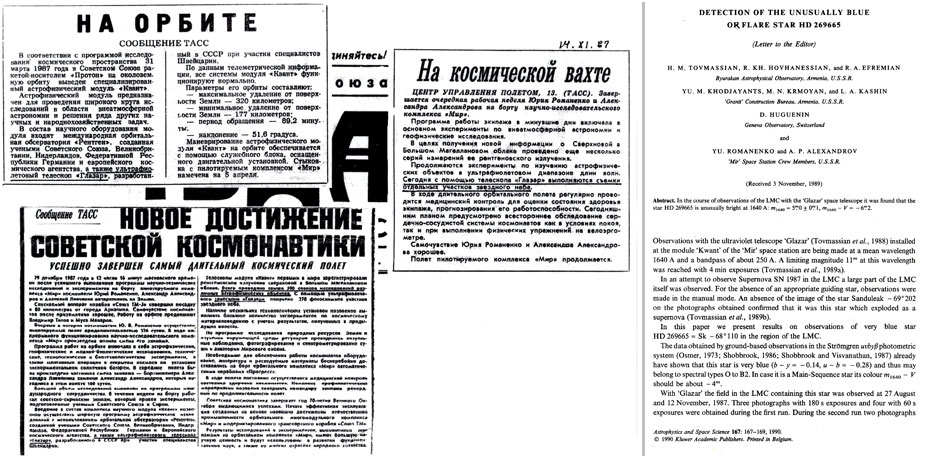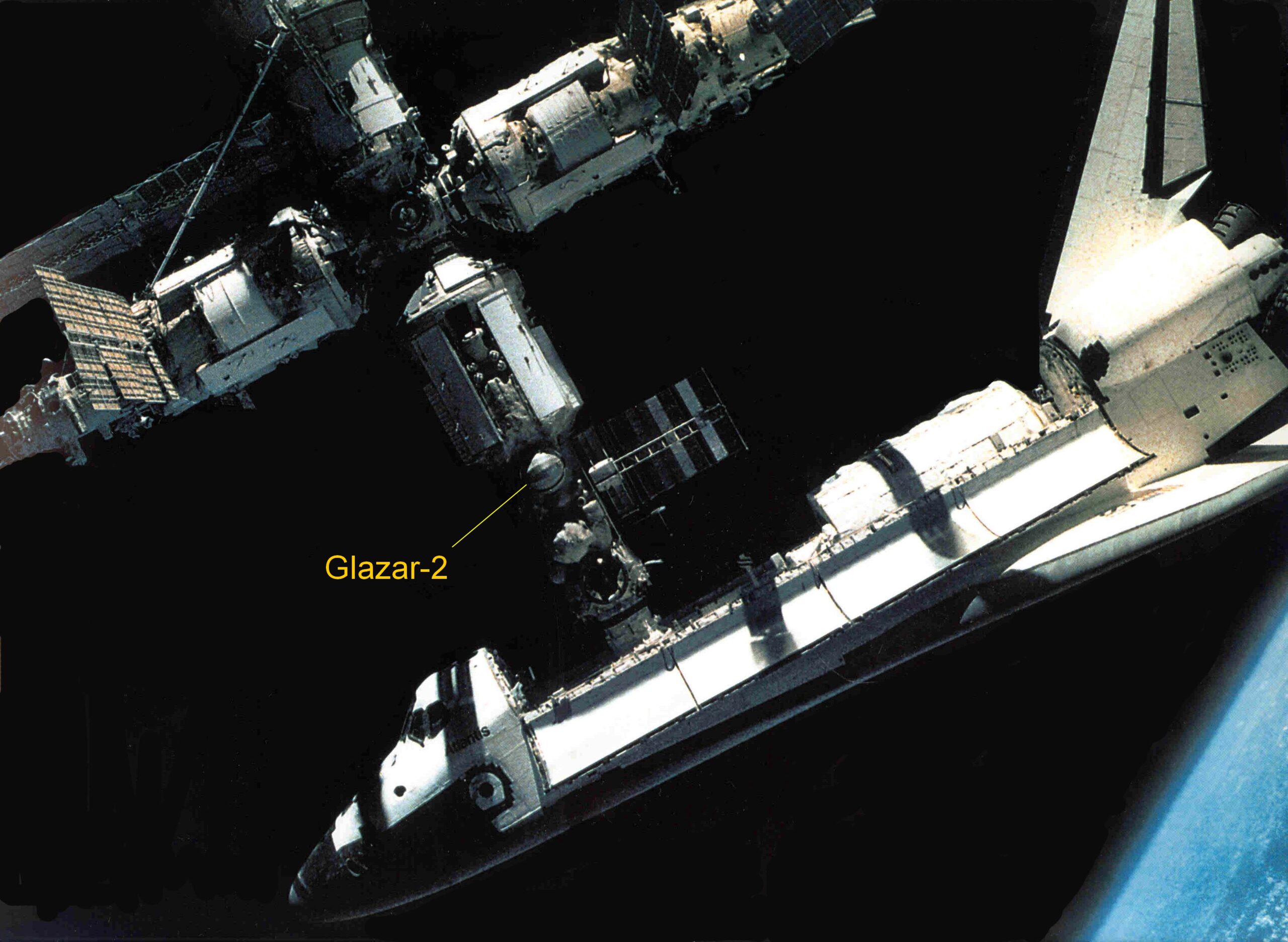(30.03.1987 – 10.06.1990)
Scientific supervisor – G. Tovmasyan
Leading designer – A. Kashin
The purpose of the experiment is to photograph the sky in ultraviolet light in a range of 250Å width with a maximum of 1600Å.
Work with the GLAZAR observatory was carried out only in the shadow part of the orbit. Before entering the shadow, the orbital station was oriented and stabilized in the inertial coordinate system so that the reference star was in the field of view of sensor A.
After entering the shadow, the astronaut turned on the observatory and, after capturing and stabilizing along the reference star A, the search system for the second guide star B was turned on. After receiving triaxial stabilization, the astronaut began the exposure program.
In addition to participating in regular sessions, the cosmonaut also performed work on depreservation and tests of the system after launch, as well as in operations to replace the telescope cassettes.
Telemetric recording of the observatory’s tracking system.
(Search, capture, calibrate, center, track)
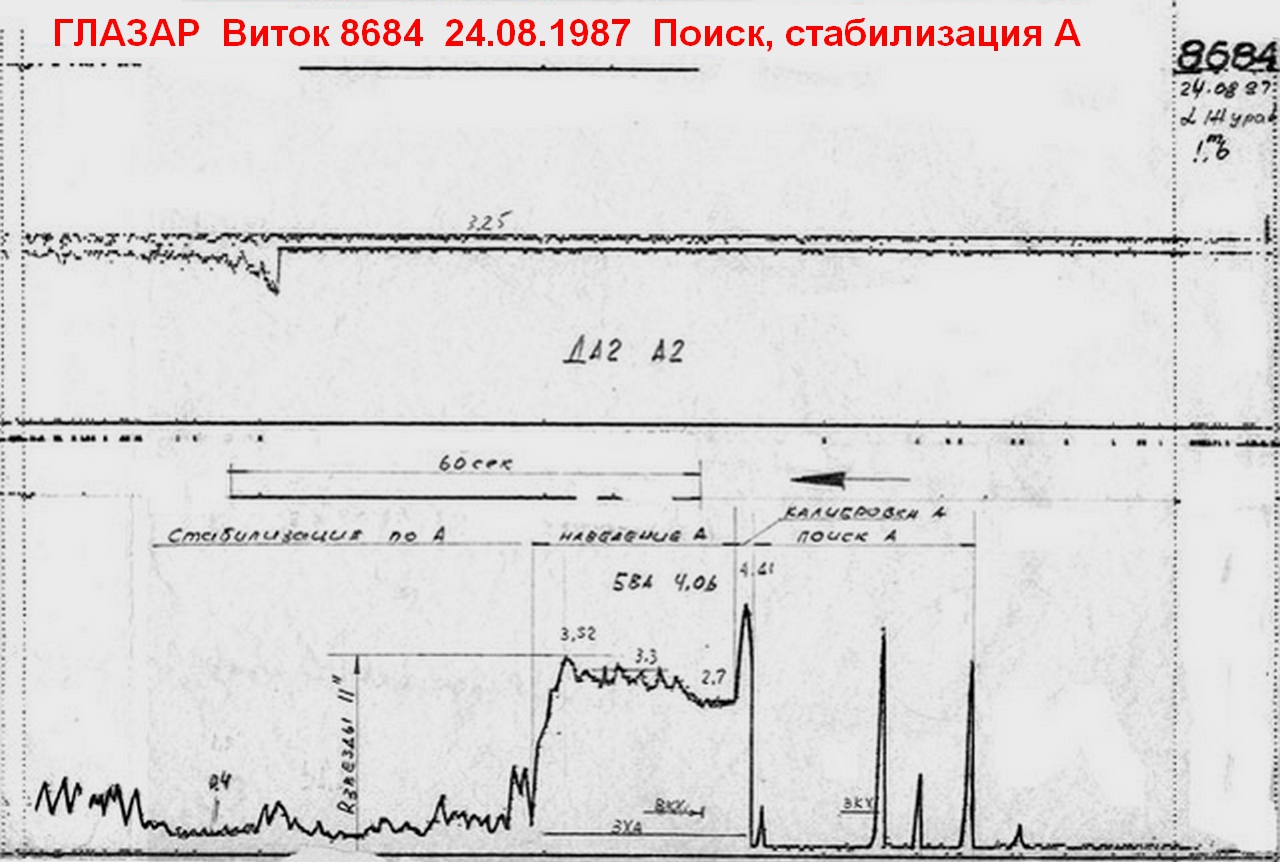 |
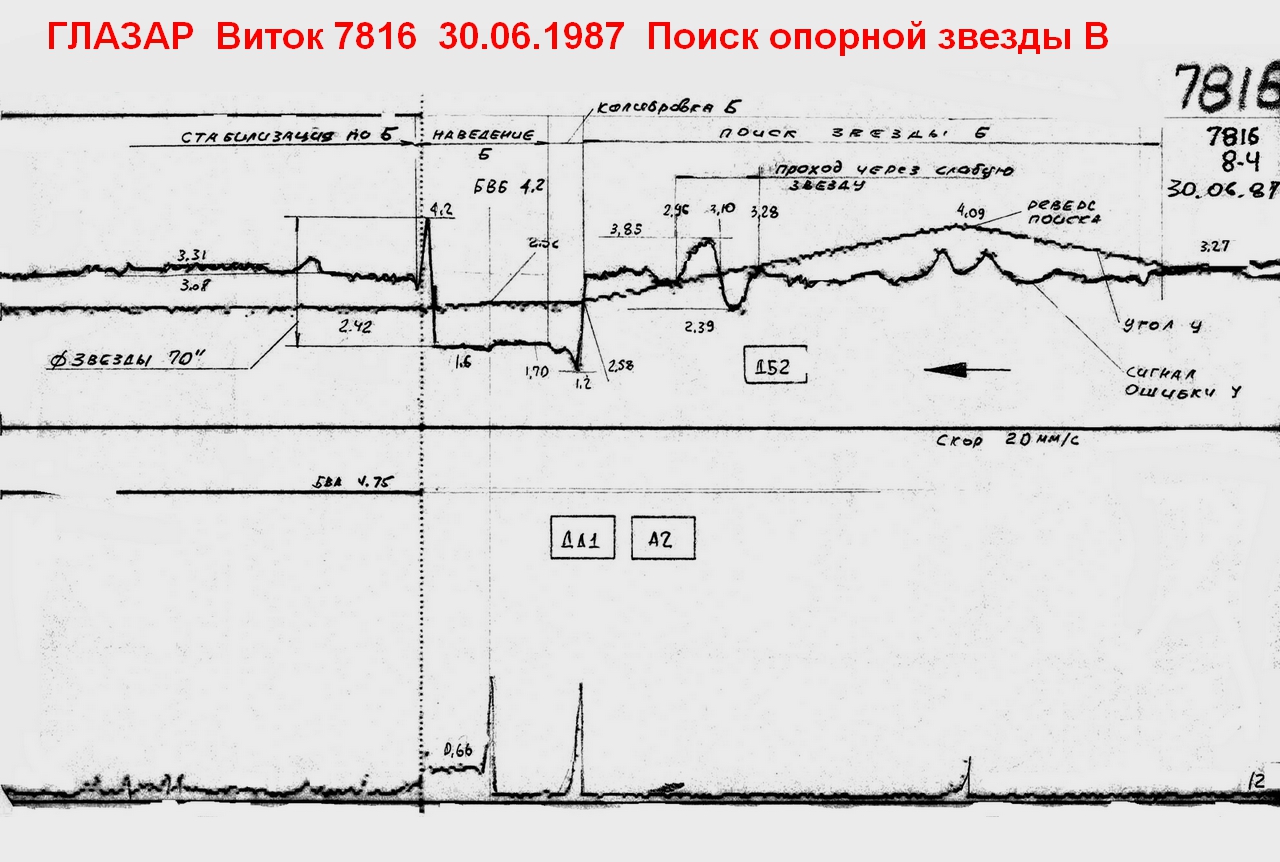 |
Tracking accuracy along the transverse axes is ± 3”, and along the rotation ± 10”
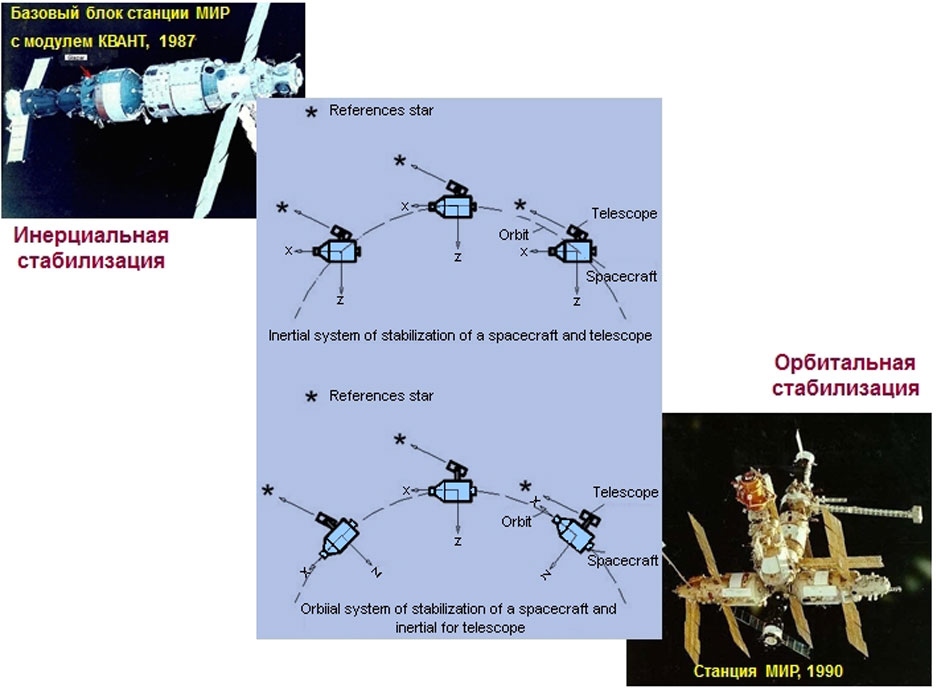 During the operation of the observatory, about 15 photo cassettes were delivered aboard the station by SOYUZ transport ships, some of which were not used due to the long stay on board the station. During the first year of work in orbit, about 300 photographs were taken of 100 areas of the starry sky. In total, GLAZAR actively worked in orbit for three years, until mid-1990, when the CRYSTAL module with the new astrophysical complex GLAZAR-2 docked to the station.
During the operation of the observatory, about 15 photo cassettes were delivered aboard the station by SOYUZ transport ships, some of which were not used due to the long stay on board the station. During the first year of work in orbit, about 300 photographs were taken of 100 areas of the starry sky. In total, GLAZAR actively worked in orbit for three years, until mid-1990, when the CRYSTAL module with the new astrophysical complex GLAZAR-2 docked to the station.
The need to install GLAZAR-2 was caused not only by the modernization of the receiving part of the telescope, but mainly by the fact that as the mass of the MIR station grew by the end of the 80s, it became increasingly impractical to put it in the inertial orientation mode while GLAZAR was operating.
GLAZAR-2 was designed to operate in a fully automatic mode and the cosmonaut’s participation was required only when changing the cassette and testing. In addition, stabilization along the third axis did not require the installation of a special star sensor, since it was carried out using the compensation unit (BC) of the GLAZAR-2 complex according to signals from the service system of the MIR station.
In addition, during the GLAZAR sessions there was no need to specially orient the MIR complex and put it in the inertial orientation mode.
Publications:
- Tovmasyan G.M., Khodzhayants Y.M., Krmoyan M.N., Kashin A.L., Zakharyan A.Z., Oganesyan R.K., Mkrtchyan M.A., Tovmasyan G.G., Butov V.V., Romanenko Y.V., Lavejkin A.L., Alexandrov A.P. , The Glazar Orbiting Ultraviolet Telescope, Soviet Astr. Lett., vol.14, p. 123, 1988.
- Tovmassian, H. M.; Epremian, R. A.; Hovhannessian, R. K.; Khodgayants, Y. M.; Krmoyan, M. N.; Kashin, A. L.; Hugenen, D.; Bootov, V. V.; Serova, S. I.; Romanenko, Y. V.; Alexandrov, A. P. On the Progenitor of the Supernova 1987A, Astrofizika V.30:2, P. 270, 1989, Astrofizika V.30:2, P. 449, 1989
- Tovmasyan G.M., Oganesyan R.K., Epremyan R.A., Nersesyan S.E., Mkrtchyan M.A., Khodzhayants Y.M., Krmoyan M.N., Kashin A.L., Huguenin D., Serova S.I., Roma¬nenko Y.V., Alexandrov A.P., Titov V.G., Manarov M.K., Ultraviolet Observations with the Space Telescope Glazar, Astrofizika, vol.32, p. 1, 1990.
- Tovmasyan G.M., Oganesyan R.Kh., Epremyan R.A., Mkrtchyan M.A., Khodzhayants Yu.M., Krmoyan M.N., Kashin A.L., Huguenin D., Romanenko Yu.V., Aleksandrov A.P., Titov V.G., Manarov M.Kh., Volkov A.A., Krikalev S.K., Stars of Early Types in the Region of the Orion Stellar Association OB1 from Observations of the Glazar Space Telescope, Astrofizika, vol.32, p.105, 1990.
- Tovmasyan, G. M.; Oganesyan, R. K.; Epremyan, R. A.; Huguenin, D.; Mkrtchyan, M. A.; Krmoyan, M. N.; Kashin, A. L.; Butov, V. V.; Serova, S. I., Ultraviolet Survey of Individual Sky Fields with the Glazar Space Telescope, Soviet Astr.(Tr: A. Zhurn.) vol.34, NO. 5/SEP, P.487, 1990
- Tovmasian, G. M.; Oganesian, R. Kh.; Epremian, R. A.; Huguenin, D.; Khodzhaiants, Iu. M.; Krmoian, M. N.; Kashin, A. L.; Aleksandrov, A. P.; Romanenko, Iu. V, Ultraviolet observations in Puppis with the space telescope ‘GLAZAR’, Astrophysics and Space Science (ISSN 0004-640X), vol. 188, no. 2, Feb., 217-231, 1992
- Tovmassian H.M., Khodzhayants Y.M., Krmoyan M.N., Isadjanian R.V., Gasparian O.N., Zakarian A. Z. and Huguenin D., Glazar-2: A Wide-Field Camera Anboard the Mir Space Station, Mac-Gilivrray H.T. et al (eds), 1991 in “Astronomy from Wide-Field Imaging,” (Mac-Gilivrray H.T. et al (eds)), Kluwer Academic Publishers, Dordrecht, , 1993
Last Updated on 2025.01.10
